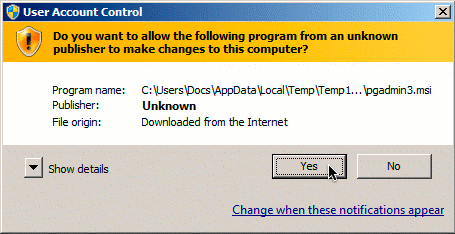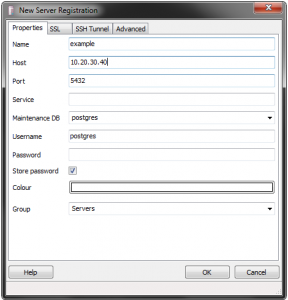
- #POSTGRESQL ENABLE REMOTE CONNECTIONS HOW TO#
- #POSTGRESQL ENABLE REMOTE CONNECTIONS INSTALL#
- #POSTGRESQL ENABLE REMOTE CONNECTIONS PASSWORD#
ident is used for remote connections and peer for local connections.
#POSTGRESQL ENABLE REMOTE CONNECTIONS PASSWORD#

trust: Allows the connection unconditionally and enables anyone to connect with the database server without the need for a password.Many of the previous commands may already be understood but it is important to realize that there are several different methods of authentication: The inserted host record line specifies a connection type, database name, a user name, a client IP address range, and the authentication method. Remember, we already changed from peer to md5 authentication for all local connections to provide user-based authentication in a former process. Then we opened Postgres’s host-based authentication configuration file called pg_hba.conf with our favorite text editor. We began the process by opening the Postgres service’s standard ports in firewalld in order to make a connection from any remote computer possible in the first place. So what did we learn from this experience? It was the purpose of this process to lift the lid on host-based authentication and provide an easy-to-use solution that will enable you to get your system up-and-running. PostgreSQL is a safe and secure database system but where we access it (either remotely or locally) can often become a cause of confusion. In our example, the Postgres server is running with the IP address 192.168.1.12.
#POSTGRESQL ENABLE REMOTE CONNECTIONS INSTALL#

Scroll down to the end of the file and append the following line, to make these lines read as follows (substitute the /XX value with a network address you want to grant access to.Now open the host-based authentication configuration file in your favorite text editor by typing:.To begin, log in as root and first open the firewall to allow any incoming PostgreSQL connections to the server:įirewall-cmd -permanent -add-service=postgresql firewall-cmd -reload.Here we will make changes to it to manage remote access to our Postgres server. In the previous process, we have already modified the host-based authentication configuration pg_hba.conf file using sed to manage our Postgres’s client authentication from peer to md5. It is expected that PostgreSQL is already installed and running. To complete this process, you will require a working installation of the CentOS 7 operating system with root privileges and a text editor of your choice.


Postgres employs a method called host-based authentication and it is the purpose of this process to introduce you to its concepts in order to provide the access rights you need to run a safe and secure database server.
#POSTGRESQL ENABLE REMOTE CONNECTIONS HOW TO#
In this process, we will learn how to configure remote access to a Postgres server which is disabled by default.


 0 kommentar(er)
0 kommentar(er)
